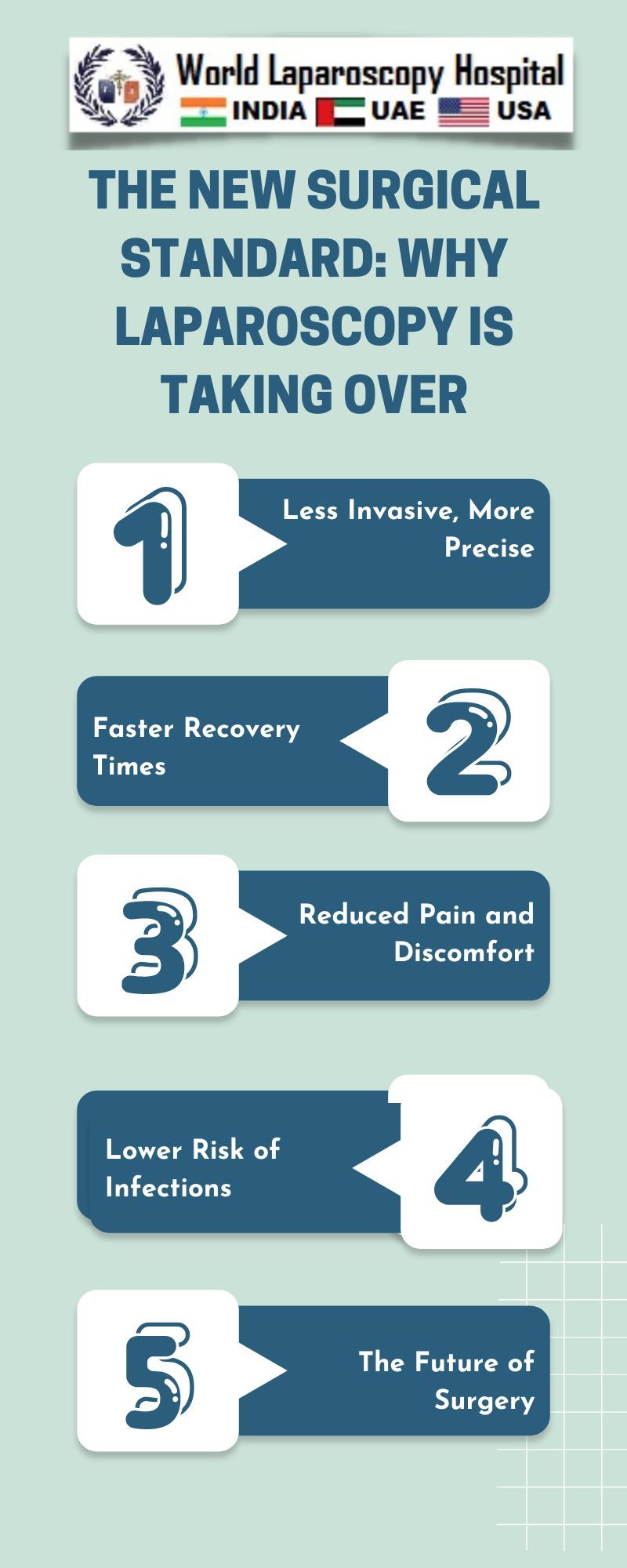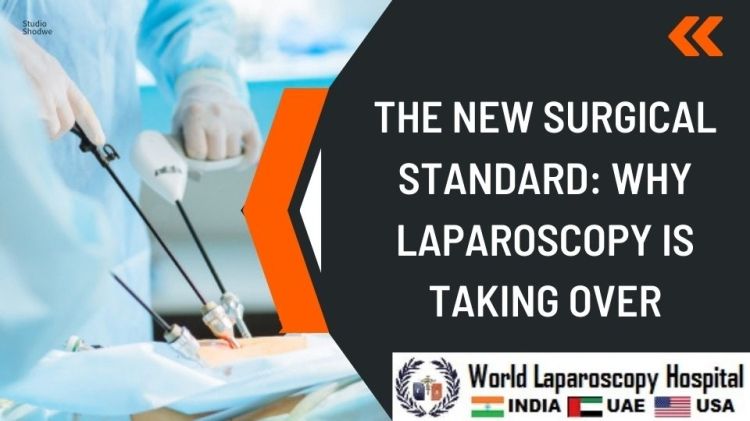The New Surgical Standard: Why Laparoscopy is Taking Over
Introduction
In recent years, the landscape of surgical procedures has undergone a significant transformation with the increasing adoption of laparoscopy. This minimally invasive surgical technique, also known as keyhole surgery, has revolutionized the field by offering numerous advantages over traditional open surgeries. As we delve into the depths of this medical evolution, it becomes apparent why laparoscopy is taking over as the new surgical standard.

Understanding Laparoscopy
Laparoscopy involves the use of a slender, lighted tube equipped with a camera, known as a laparoscope, which is inserted through small incisions in the body. This innovative approach allows surgeons to visualize internal organs and perform intricate procedures with unparalleled precision. Unlike traditional open surgery, which requires a large incision, laparoscopy involves only small keyhole incisions, resulting in reduced trauma to surrounding tissues.
The Evolution of Surgical Techniques
Historically, open surgery was the primary method for addressing various medical conditions. However, the drawbacks of this approach, such as prolonged recovery times, increased pain, and higher risk of infection, prompted the search for alternatives. Laparoscopy emerged as a game-changer, offering a safer and more patient-friendly option.
Benefits of Laparoscopy
Quicker Recovery Times:
One of the most significant advantages of laparoscopy is the remarkably shorter recovery times for patients. With smaller incisions, there is less trauma to tissues, leading to reduced pain and a quicker return to normal activities. Patients can often resume their daily routines within a fraction of the time required for traditional open surgery.
Reduced Pain and Discomfort:
Laparoscopy minimizes postoperative pain and discomfort. The smaller incisions result in less damage to nerves and muscles, contributing to a more comfortable postoperative experience. This reduction in pain not only enhances the overall patient experience but also minimizes the need for strong pain medications, reducing the risk of associated side effects.
Smaller Incisions, Lesser Scarring:
The cosmetic aspect of laparoscopy is noteworthy. The tiny incisions used in laparoscopic procedures leave minimal scarring compared to the large scars associated with open surgery. This aesthetic benefit is particularly relevant for procedures in visible areas, boosting patient satisfaction.
Lower Risk of Infection:
Smaller incisions not only reduce scarring but also lower the risk of postoperative infections. In open surgery, the larger wound provides more opportunities for pathogens to enter the body. Laparoscopy's smaller incisions and reduced exposure help minimize this risk, promoting a safer surgical environment.
Precision and Enhanced Visualization:
The laparoscope provides surgeons with a high-definition, magnified view of the surgical site, allowing for unparalleled precision. The 3D visualization enhances the surgeon's ability to navigate and manipulate tissues, leading to improved outcomes in complex procedures.
Shorter Hospital Stays:
Due to the faster recovery times and reduced complications associated with laparoscopy, patients often experience shorter hospital stays. This not only reduces healthcare costs but also frees up hospital resources for other patients, contributing to overall healthcare efficiency.
Applications of Laparoscopy
Laparoscopy has expanded its reach across various medical specialties, becoming the preferred approach for a wide range of procedures. Some notable applications include:
Gynecology:
Laparoscopy has become the standard for many gynecological procedures, such as hysterectomy, ovarian cyst removal, and tubal ligation. The benefits of reduced scarring and quicker recovery make it particularly attractive in this field.
Gastroenterology:
Procedures like cholecystectomy (gallbladder removal), appendectomy, and hernia repair in the gastrointestinal domain have seen a shift towards laparoscopy. The ability to access abdominal organs with minimal invasion is especially beneficial in these cases.
Urology:
Laparoscopy is increasingly used in urological procedures, including prostatectomy and nephrectomy. The precision and reduced trauma associated with laparoscopic techniques contribute to improved outcomes in urological surgeries.
Orthopedics:
While orthopedic surgeries traditionally involve larger incisions, laparoscopy is gaining traction in this field for certain procedures like knee and shoulder surgeries. The benefits of smaller incisions and quicker recovery are driving this shift.
Challenges and Advances
While laparoscopy offers numerous advantages, it is essential to acknowledge the challenges and ongoing advancements in the field:
Learning Curve:
Mastering laparoscopic techniques requires specialized training due to the complexity of manipulating instruments through small incisions. Surgeons need to overcome a learning curve to achieve proficiency in laparoscopic procedures.
Equipment Costs:
The initial costs of laparoscopic equipment can be higher than those for traditional open surgery. However, the long-term benefits, including reduced hospital stays and quicker recovery times, often outweigh the initial investment.
Patient Selection:
Not all patients are suitable candidates for laparoscopy, depending on factors such as the complexity of the procedure, the patient's overall health, and the surgeon's expertise. Proper patient selection is crucial to ensure optimal outcomes.
Technological Advances:
Ongoing technological advancements, such as robotic-assisted laparoscopy, continue to refine and expand the capabilities of laparoscopic surgery. Robotics offer improved dexterity and precision, further enhancing the potential applications of minimally invasive techniques.
Conclusion
Laparoscopy has undeniably emerged as the new surgical standard, transforming the way medical professionals approach a myriad of procedures. With its array of benefits, including quicker recovery times, reduced pain, and enhanced precision, laparoscopy is reshaping the patient experience and setting a higher standard for surgical outcomes. As technology continues to advance and surgical techniques evolve, the future holds even greater promise for the widespread adoption and refinement of laparoscopic procedures across various medical disciplines.
